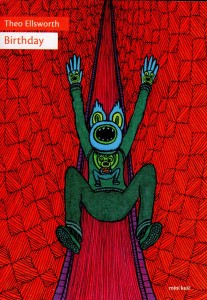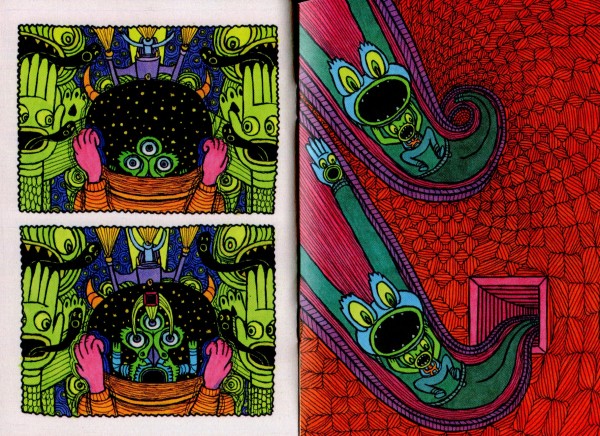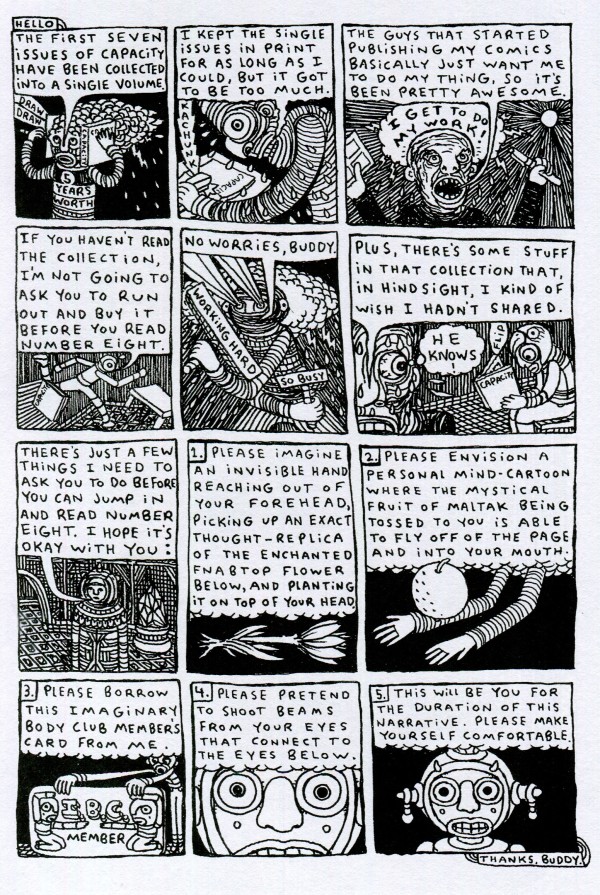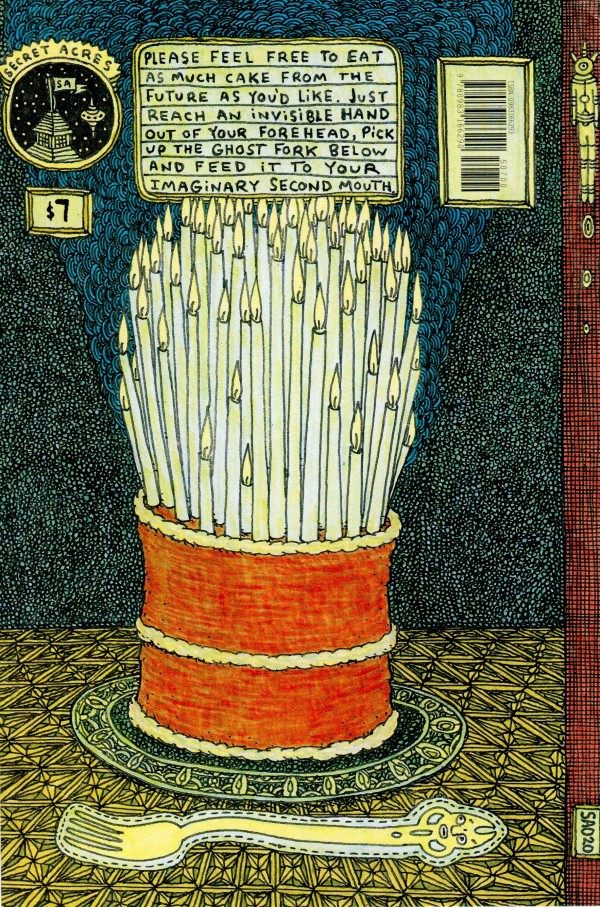What We’re Reading: Theo Ellsworth

 Birthday (mini kuš! #35) and Capacity #8 by Theo Ellsworth (Secret Acres, kuš! komiksi, 2015)
Birthday (mini kuš! #35) and Capacity #8 by Theo Ellsworth (Secret Acres, kuš! komiksi, 2015)
The only text relevant to Theo Ellsworth’s Birthday is on the back cover: “Our hero is insanely nervous. He’s about to undergo an intense psychic initiation known as the Inner-Space Birth Ritual. You’d be nervous, too!” From there, we’re on our own.
Luckily, Ellsworth’s art is filled with patterns of parallel lines and nested ornamentation, making each page feel like a woodcut. The level of detail combined with a complete lack of text encourage one to linger on every panel. The characters feel organically modular: the protagonist’s cloud of anxiety is dispelled to a fish mouth and replaced by a small spaceship-cum-hat. Later, inside a Birth Ritual Helmet, faces flash and change across its starry surface.
In the end, the protagonist is reduced (symbolically?) to a baby, cradled by a massive, smiling creature-structure. The Birth Ritual seems successful, and perhaps the baby has personified and utilized his negative aspects in the process; “process” is the key word here, since the book is more a process than a story. The minimalism is implicitly inviting.
On the other hand, Capacity is explicitly inviting. If Birthday is an organic or ritual process, Capacity is a mechanical one. Ellsworth invites the reader to his 1412th birthday, transporting them through space and time via thought-replicas of fnabtop flowers, a fruit of maltak, and an imaginary body. Dressed in his best wolfman self, Future Ellsworth relates the drastic ways in which the earth will change over the next 1,400-odd years. He explains imaginary hyper-intelligence beans, personal-mind-configuration keys, multi-dimensional time-crystals, and mind-weather starters.
In contrasting the two books, I initially felt that Birthday was like witnessing a miracle whereas Capacity was closer to reading the Bible (or having the Bible explained to you), but there’s something banal in the assumptions behind that comparison. Who wouldn’t choose to witness the miracle?
But I found myself enjoying Capacity a bit more. Reading it felt like being equipped with the tools to understand future miracles and to maybe even make my own.
Does dismantling sets of symbolism reduce their effectiveness? Or can explanation lead to further mysteries?










Comments are closed.